MSI GeForce RTX 5060 Gaming OC Review


As a studio, Playdead do not have the biggest repertoire of titles under their belt. That said, the team’s two games – LIMBO and INSIDE – are both certified indie classics which received universal critical acclaim upon their respective releases. If you have yet to try either title, you might want to get on it, as both games are set to be delisted from GOG later this week.
In a surprising post published to the store’s forums, the GOG team officially announced that both LIMBO and INSIDE are set to be delisted, writing:
“Hi everyone, I'm sorry to inform you that Limbo and Inside will be removed from our store on July 17th, 2025, 3 PM CEST. We don't have any information on discounts yet. Wish I could have better news for you, but grab it while it's still here!”
No reason was given for the delisting, but fans have speculated that it is to do with the ongoing lawsuit between Playdead co-founders Dino Patti and Arnt Jensen.
Regardless of the reason, both LIMBO and INSIDE are excellent, unique and highly atmospheric puzzle platformers and so you should grab them while they remain available to purchase.
No such delisting has been announced for any other platforms, but it wouldn’t be surprising to see the game being removed from other storefronts shortly. Hopefully both titles are brought back at some point – but in case they don’t you might want to pick up both games as soon as possible.
KitGuru says: What do you think of Playdead’s output? Are you looking forward to their mysterious 3rd game? Why do you think both titles are being delisted? Let us know down below.
The post Indie classics LIMBO and INSIDE are being removed from GOG first appeared on KitGuru.A couple months ago, a rumour popped up claiming that Rockstar Games were gearing up to release a remaster of the 2008 7th-gen classic Grand Theft Auto IV. While we’ve yet to hear anything official on the matter, an update to Rockstar’s support page now lends credence to the notion that GTA IV is coming to more modern systems.
As discovered by Reddit user ‘deVonY7’ Rockstar recently updated their support page for GTA IV, listing PlayStation 4 as one of the game’s available platforms.
Of course, Grand Theft Auto IV released back in 2008 and so remains locked to the PlayStation 3 and Xbox 360 on consoles.
Thanks to Microsoft’s backwards compatibility efforts however, GTA IV is playable on current Xbox systems. For PlayStation however, the PS3 library remains inaccessible without a PS4/5 re-release of sorts.
Regardless, GTA IV remains one of the most requested Rockstar games to be ported to current-gen platforms – especially as the likes of Red Dead Redemption 1 have now been remastered.
Following the reports of this ‘leak’ Rockstar subsequently updated the page to remove all mention of the PS4. Whether this adds to the evidence of a remaster or counters it, we will have to wait and see.
That said, with Grand Theft Auto VI no longer slated to launch this year, Rockstar has an excellent opportunity to keep fans satiated in the meantime. We will have to wait and see whether the GTA IV remaster pans out or not.
KitGuru says: Would you welcome a remaster of GTA IV? What improvements would you want to see made? What do you expect from this remaster? Let us know down below.
The post Rockstar accidentally leaks Grand Theft Auto IV Remastered for modern systems first appeared on KitGuru.Back in 2022, EA officially announced that it would no longer be licensing out the FIFA name for its annual football titles, saving between $150-300 million a year and instead opting for the name EA Sports FC. Despite the lack of the FIFA branding, EA’s football titles continue to thrive – with FC 25 reportedly selling almost 20 million copies on PlayStation alone.
As reported by Alinea Analytics, EA’s Sports FC continues to make the publisher unfathomable amounts of money despite the lack of any official FIFA branding.
While we’ve not gotten a full breakdown of the game’s sales success, the analysts have shared that EA Sports FC 25 (released back in September 2024) sold 905,000 copies on PlayStation during the month of June.
While in and of itself impressive given the relative age of the game, what is perhaps more surprising is the fact that since its release in September of last year, EA Sports FC 25 has sold a staggering 19.2 million copies – on PlayStation alone.
It is worth noting that EA’s football titles have historically been the biggest on PlayStation, and so the total figure across all platforms may not be that much higher.
Regardless, it is surprising to see just how big EA’s football titles are, with or without the FIFA name.
KitGuru says: Are you a fan of EA’s annual football titles? Do you care about the lack of the FIFA name? How many of these 20 million players do you think partake in Ultimate Team? Let us know down below.
The post EA Sports FC 25 has sold almost 20 million copies on PlayStation alone first appeared on KitGuru.DRM is the bane of many PC players, with Denuvo being the most famous (or infamous). While almost all games with DRM eventually get cracked by fans, developers have begun taking it into their own hands, patching the DRM out after launch. Finally, almost exactly one year on from its release, Denuvo has been removed from Capcom’s Kunitsu-Gami: Path of the Goddess.
As discovered by ResetEra user ‘nsilvias’ Capcom recently updated Kunitsu-Gami: Path of the Goddess to remove Denuvo’s anti-tamper DRM.
For the uninitiated, major video game releases are typically front loaded sales-wise, with a large portion of the game’s revenue being amassed from pre-orders and day-one sales. Furthermore, the Denuvo DRM software has historically been the cause of many issues, both performance and graphics related and its removal only serves to benefit the gaming experience overall.
Unfortunately, the removal of Denuvo came alongside the addition of another DRM – Capcom’s own Enigma software. That said, this move is still being celebrated as Enigma is said to be far less impactful than Denuvo.
Research has suggested that Denuvo is effective only up until the first 3 months on the market – at which point its costs are no longer worth it. As such, it is curious to see Kunitsu-Gami having had its DRM enabled for a whole year.
It will be interesting to see whether this change has any impact on the game’s sales moving forward.
KitGuru says: What do you think of Denuvo? What about DRM in general? Have you checked out Kunitsu-Gami? Let us know down below.
The post Capcom has removed Denuvo DRM from Kunitsu-Gami: Path of the Goddess first appeared on KitGuru.Following the release of Mario Kart World alongside the launch of the Switch 2, the next major first-party title coming to Nintendo’s sequel system is Donkey Kong Bananza. Set to arrive in under a week’s time, the team at Nintendo have offered a surprisingly candid response to comments regarding the upcoming title’s somewhat inconsistent framerate.
Nintendo titles are typically rather solid performance-wise, with most first-party offerings running at a smooth 60fps. With the Switch generation in particular however, we saw Nintendo push the hardware as far as it could – leading to some games operating far below their target frame rates.
Despite this, the console maker remained silent on these aforementioned performance issues. As such, it comes as a bit of a surprise that Nintendo has now directly addressed the performance of the upcoming Donkey Kong Bananza, with the game’s director Kazuya Takahashi telling the publication ‘Lavanguardia’ (as translated by NintendoEverything):
“There are several factors to consider. First, we intentionally used effects like hit-stop and slow motion to emphasize impacts. Second, because we use voxel technology, there are times when there are major changes and destruction in the environment. We’re aware that performance may drop slightly at these times. However, as you say, overall the game is smooth, and at points where large-scale changes occur, we prioritized fun and playability.”
For the uninitiated, Donkey Kong Bananza’s main mechanic is in its destruction, with much of the game’s platforming and puzzles requiring the player to break various parts of the environment.
Though typically a 60fps experience, early analysis has identified various points in which Bananza’s frame rate is impacted. Fortunately, it appears so far as though the biggest drops occur during non-gameplay moments – meaning it shouldn’t be too much of a noticeable issue.
As mentioned, it is interesting to see Nintendo directly discussing the framerate and performance of a first-party title, especially given how silent they’ve been on the matter in the past.
That said, with the Switch 2 being Nintendo’s latest and greatest system, perhaps the console maker is simply trying to justify why their brand new device is already suffering from some performance issues. It will be interesting to see how other first-party Nintendo games perform as and when they arrive on Switch 2.
KitGuru says: What do you think of the statement? Are you bothered by the framedrops? Do you notice performance issues more when playing or watching a game? Let us know down below.
The post Nintendo addresses Donkey Kong Bananza’s inconsistent frame rate first appeared on KitGuru.The KitGuru Reader Awards return for 2025. This is where we ask you to tell us which brands you think are doing the best job in the tech space and as a thank you for entering, we are also running a giveaway, with the winner getting their choice of an RTX 5070 Ti or an RX 9070 XT graphics card!
Voting is now open for the KitGuru Reader Awards 2025, and it takes just a few minutes to have your say.
Whether you're loyal to a specific chassis manufacturer, think a certain monitor brand deserves more love or have been blown away by your latest motherboard purchase, now is the time to make your opinion count.
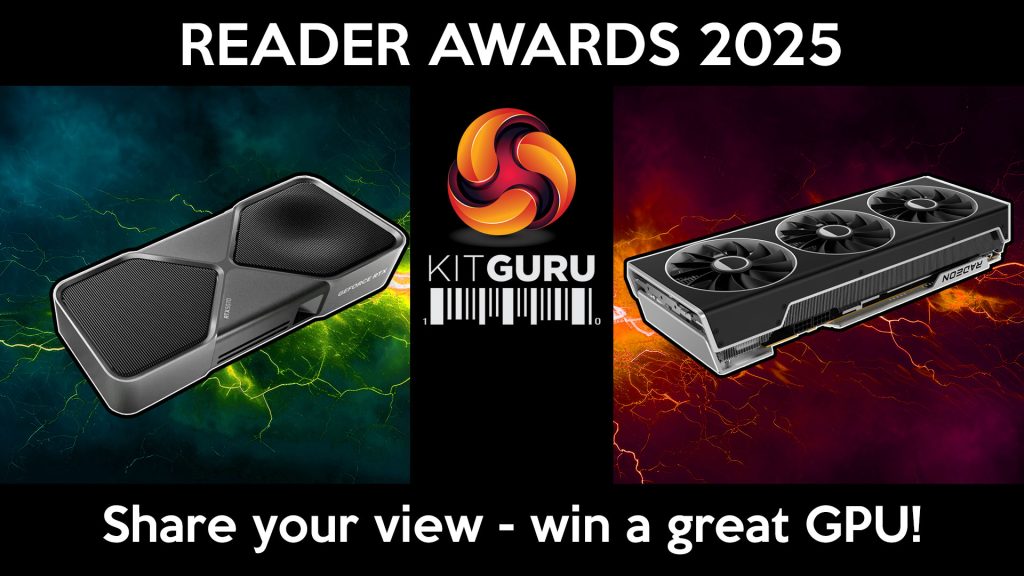
Not only will your votes shape the KitGuru Reader Awards, but they’ll also feed directly into the European Hardware Association Reader Awards, which will be revealed in Cologne on Monday 19th August – the evening before Gamescom opens. With nine leading tech publications involved across Europe, this is your chance to help decide the biggest pan-European technology community awards of the year.
To thank you for taking part, we’re giving one lucky voter the chance to win a high-end graphics card worth £850. You’ll be able to choose your prize – for example, between a brand-new RTX 5070 Ti or a Radeon RX 9070 XT – depending on your platform preference.
Entering the draw is easy and you can choose to answer/skip as many categories as you like. If you want a chance to win – please fill in the email box at the end of the survey. Everyone who enters has an equal chance.
Voting opens: Now
Voting closes: Midnight, Saturday 20th July
Prize winner announced: Tuesday 23rd July
KitGuru Award Results published: Monday 12th August
EHA Reader Awards announced live in Cologne: Monday 19th August
Click to go to our Reader Awards 2025 voting form. Remember: You don’t need to vote in every category – so just skip any that don’t apply to you.
KitGuru Says: Whether you're a regular commenter or a quiet observer, this is your moment to shape the narrative. Tell us which brands have earned your trust and admiration in 2025 — and maybe win yourself a serious GPU upgrade while you're at it. Good luck – and thank you for being part of the KitGuru community over the last 16 years!
The post KitGuru Reader Awards 2025 – Vote and win an RTX 5070 Ti or RX 9070 XT! first appeared on KitGuru.Regular mid-towers are a thing of the past. Most PC case manufacturers are now experimenting with unusual designs, stuff that most people would never even think of. Surely, PC cases do not hold as big of a status in our minds as a CPU or GPU, but they can indirectly influence the performance of a computer. Case manufacturers are becoming more creative when it comes to airflow and we have seen so many of them that it feels like there is no limit to unique designs. Once such a design is seen on the OmnyX mid-tower chassis by COUGAR, which […]
Read full article at https://wccftech.com/review/cougar-omnyx-case-review/

Intel entered the discrete graphics card market two years ago with its Alchemist architecture. The launch was highly anticipated, as the company entered a market dominated by NVIDIA and AMD for decades. But not everything went as planned. Intel's Arc A-series "Alchemist" graphics cards launched after much delay & even a delayed launch couldn't help the blue team's case as it was plagued with severe driver issues, software problems, and general gaming issues. This left a sour note in the minds of folks who had been waiting to see what Intel had to offer. Following the launch, there were several […]
Read full article at https://wccftech.com/review/maxsun-intel-arc-b580-icraft-12-gb-graphics-card-review/

FSP is strengthening its standing in the premium case market with its new U691 full tower, a chassis designed for builders who want to showcase components while also having plenty of room for cooling and today's extra-large graphics cards. By combining expansive glass panelling with mesh and a versatile cooling layout, the U691 aims to deliver on both form and function.
The U691 makes a bold first impression with the front, top, and left sides adorned with 4mm tempered glass panels, all mounted to a sturdy 0.8mm SPCC steel frame. This “fish tank” style offers an uninterrupted view of the system inside, and to ensure hardware can breathe, the bottom and right-side panels are constructed from steel mesh fitted with dust filters.
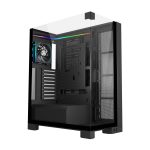
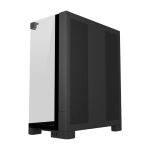
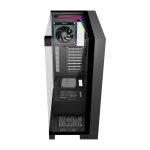
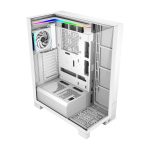


Measuring 451 × 258 × 568mm, the U691 offers an expansive interior. It supports ATX, mATX, and Mini-ITX motherboards, with ample room for today's massive components. That includes CPU coolers up to 180mm tall and graphics cards up to 420mm long. For storage, the case provides a flexible arrangement of drive bays located behind the motherboard tray and on a removable bracket, keeping the main chamber clutter-free.
The cooling potential is where the U691 truly stands out. While a single 120mm ARGB PWM fan is pre-installed at the rear, the enthusiast-level support is found elsewhere. The right-side panel can be kitted out with up to four 120mm fans or three 140mm fans, or even a massive 480mm radiator. An additional three 120mm fans can be mounted on the bottom panel for direct GPU cooling. To complete the look, a subtle ARGB light strip runs along the rear interior.
FSP has included several user-friendly features to simplify the building process, including a motherboard tray that can be removed for easy component installation outside the chassis. Moreover, the exterior panels are secured with thumbscrews, and rubber grommets line the cable routing channels to help achieve a clean final build. Lastly, the front I/O, located on the front-right foot of the case, includes two USB-A ports and a USB-C port. The FSP U691 is coming to market for €129.
Discuss on our Facebook page, HERE.
KitGuru says: Do you think it's a fair price for the FSP U691, considering its specs and looks?
The post FSP launches the U691 full tower with three-sided tempered glass window first appeared on KitGuru.Just when you were getting used to PCIe 5.0 speeds, the next generation of storage performance is already knocking on the door. According to a leaked presentation slide, Silicon Motion is set to officially unveil the MonTitan SM8466 SSD controller at the Flash Memory Summit next month, and the numbers are staggering. The new enterprise-focused controller is built to leverage the PCIe 6.0 x4 interface, with sequential read speeds of up to 28GB/s.
These figures, which first appeared in a leak from ITHome (via Guru3D), align with the expectations many had for the next-gen PCIe drives (twice as fast as flagship PCIe 5.0 controllers). The SM8466 controller is a powerhouse, featuring 16 NAND channels designed to support all upcoming forms of 3D NAND memory. This architecture will enable SSDs to scale up to a whopping 512TB on a single drive. To achieve this level of performance and density, SMI is reportedly turning to TSMC's N4 process node.
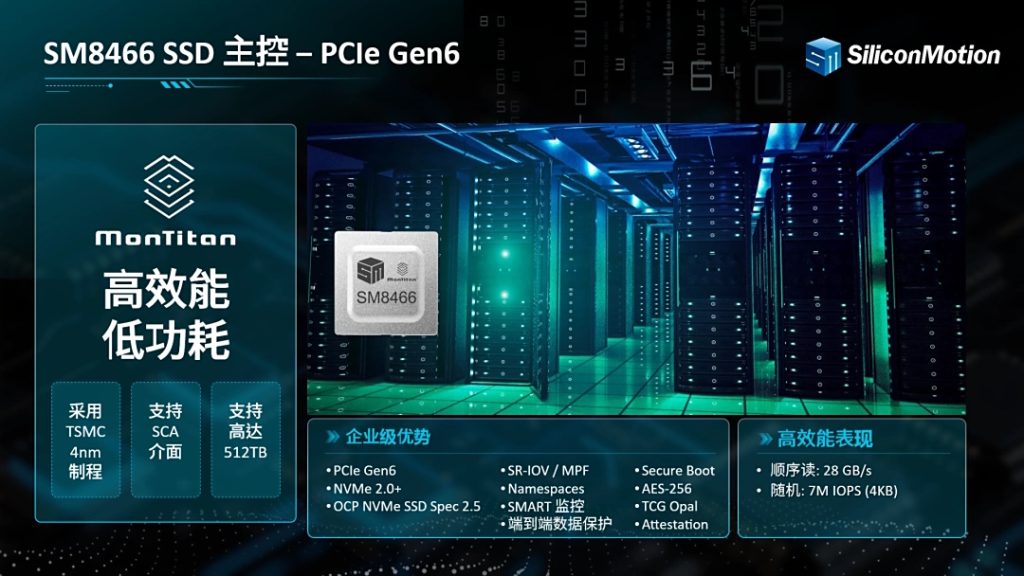
Image via: ITHome
Don't expect to slot one of these into your gaming rig anytime soon, however. The SM8466 is squarely aimed at data centre usage. It's expected to be compliant with the OCP NVMe SSD Spec 2.5 and NVMe 2.0+ specifications, making it ideal for cloud and hyperscale deployments. The feature set includes enterprise tools like SR-IOV for virtualisation, end-to-end data path protection, and robust security measures, including Secure Boot, TCG Opal compliance, and AES-256 encryption.
The performance of SM8466-based drives is set to blow past not only the best client SSDs but almost all current-gen enterprise storage solutions. The first SM8466-powered SSDs are still some ways off and may not arrive until early 2027. This timeline means it should be available alongside other next-generation server hardware aimed at the growing AI market, like Nvidia's ‘Rubin' GPU.
Discuss on our Facebook page, HERE.
KitGuru says: When do you think we'll have our hands on the first consumer-oriented PCIe 6.0 SSDs?
The post Silicon Motion’s new SM8466 PCIe 6.0 SSD controller to deliver speeds of up to 28GB/s first appeared on KitGuru.While AMD's Radeon RX 9070 GRE was officially launched back in May as a China-exclusive card, we've been left wondering how this cut-down GPU performs. Now, thanks to the team at ComputerBase, who managed to import a Sapphire Pulse model, we have our answer. The verdict? It's a sound 1440p gaming card that carves out an interesting spot in the market.
Under the hood, the RX 9070 GRE is built on the same 4nm “Navi 48” silicon that powers the rest of the RX 9070 series. However, AMD has made some significant cuts to create this SKU. The compute unit count is reduced to 48, giving it 3,072 stream processors. Moreover, the memory configuration has been trimmed to 12GB of GDDR6 running across a 192-bit bus, with the Infinity Cache also reduced to 48MB. Despite these reductions, the card maintains the same 220W Total Board Power as the RX 9070.
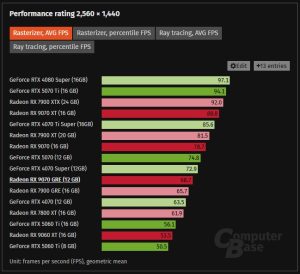
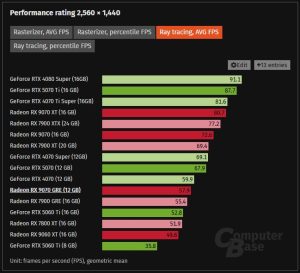
Image credit: ComputerBase
In a suite of 13 game tests at 1440p resolution run by Computer Base, the RX 9070 GRE proves to be a potent performer. On average, it delivers a 28.4% performance uplift over AMD's own RX 9060 XT 16GB and comfortably beats out Nvidia's RTX 5060 Ti 16GB by 22%. It even manages to pull ahead of the last-gen RX 7800 XT by 11% and the RTX 4070 by 5%. However, it doesn't quite catch its more powerful siblings. The standard RX 9070 remains 14% faster, while the flagship RX 9070 XT is a further 29% ahead. Nvidia's RTX 5070 also holds a 9% lead over the new GRE card.
This performance places the RX 9070 GRE in a unique position, slotting perfectly into the performance gap between the market's key mid-range players. Unfortunately, it still isn't available in other regions besides China. Whether we will ever see this card officially released worldwide remains to be seen, but for now, it stands as a strong and compelling mid-range option for the region it serves.
Discuss on our Facebook page, HERE.
KitGuru says: Would like to see the AMD Radeon RX 9070 GRE available in your region?
The post AMD Radeon RX 9070 GRE benchmarks show strong 1440p performance first appeared on KitGuru.AMD's high-performance CPU journey continues on the desktop platform with the arrival of the Zen 5 core architecture. The new architecture has several fundamental changes that allow huge performance uplifts in single-core and multi-core applications. These can be attributed to the 16 percent IPC improvement that the new architecture has on offer. Replacing the AMD Ryzen 7000 "Zen 4" CPUs, the Ryzen 9000 "Zen 5" CPUs do not change the core configurations but enhance them in certain ways. The architectural upgrades allow Zen 5 chips to run cooler, consume lower power, and support the latest features on existing and upcoming […]
Read full article at https://wccftech.com/review/amd-ryzen-9-9950x3d-3d-v-cache-cpu-review-ultimate-multi-threading-gaming-combo/

There is one thing that immediately looks different about the Corsair Frame 5000D RS, the motherboard tray looks like a peg board! It is attached by four screws so you can easily…
You can either thank or curse the researchers at the University of Toronto for discovering that Rowhammer isn't just for DRAM anymore. They provided a proof of concept attack against NVIDIA A6000…
AMD's RDNA 4 lineup promised to deliver great gaming performance, a great set of features, and great value. The company has achieved these objectives with the 9070 and 9060 series, which is a big turnaround for Team Red. The sales have been strong, and today, we look at one of the strongest models based on the RX 9070 XT. So, for today's review, we will be trying out the ASRock Radeon RX 9070 XT Taichi OC, which has an MSRP of $849.99 US. This is a $350 US premium over the $599.99 MSRP, which is expected given the supply and […]
Read full article at https://wccftech.com/review/asrock-radeon-rx-9070-xt-taichi-oc-16-gb-graphics-card-review-3-1-ghz-rdna-4-with-fantastic-cooling-gaming-performance/


The rumour mill for AMD's next-generation Zen 6 architecture is beginning to spin, with new reports emerging from a well-known source. Apparently, AMD has begun sampling its Zen 6-based desktop processors, codenamed “Medusa Ridge”, to its close industry partners. If the whispers are true, we could be looking at significant upgrades to both the core chiplets and the I/O die.
According to Yuri Bubliy (via Wccftech), also known as 1usmus, the creator of the Hydra tuning software, the new Zen 6 Core Complex Die (CCD) will be fabricated on TSMC’s N2 process node. This move to a much denser node is expected to give AMD the transistor budget needed to finally increase the core count per CCD. For several generations, AMD has stuck with an 8-core design for its primary CCDs. With Zen 6, sources indicate this could be boosted to 12 cores, accompanied by a proportionate increase in L3 cache to 48MB. It remains to be seen whether AMD will configure this as a single, monolithic 12-core complex or as a dual-CCX design with six cores each.
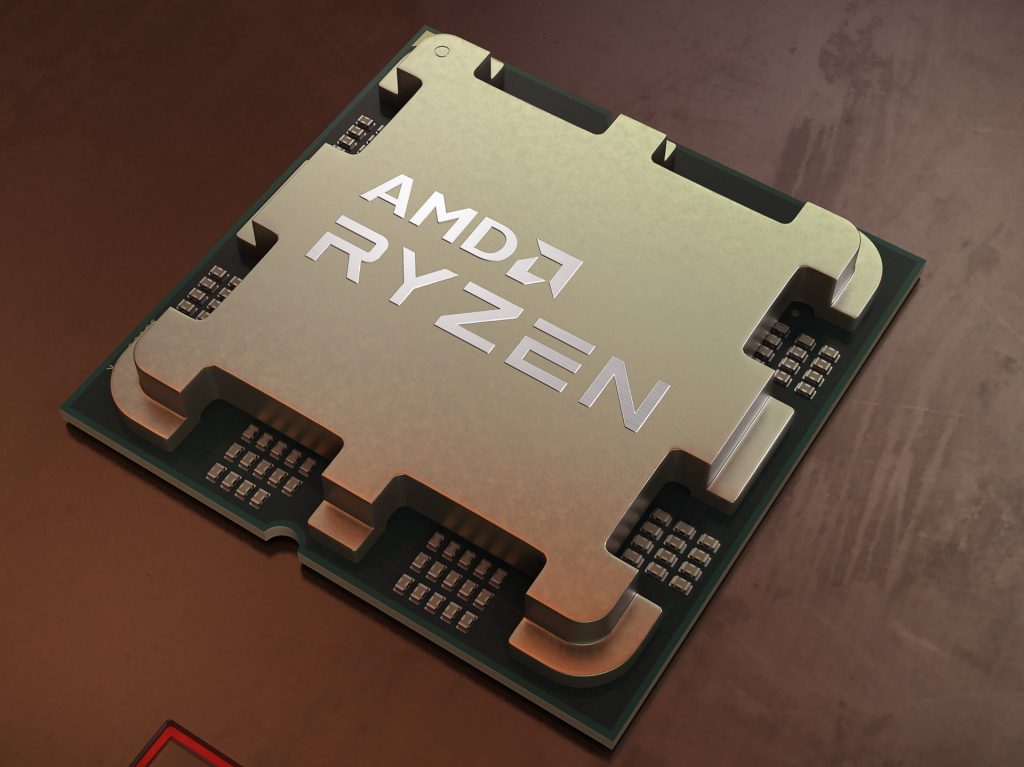
Perhaps just as significant is the rumoured overhaul of the client I/O die (cIOD). 1usmus claims that “Medusa Ridge” will feature a brand new cIOD built on a more modern EUV process, moving away from the 6nm die used in current Ryzen processors. The primary driver for this upgrade is said to be the memory controller.
The new cIOD will reportedly feature a redesigned dual memory controller architecture. While the platform will likely remain dual-channel DDR5, this new design is supposedly engineered to enable much higher memory clock speeds, allowing AMD to close the gap with Intel in memory frequency and bandwidth performance. For those who enjoy tweaking their systems, Bubliy notes that core boosting technologies like Precision Boost Overdrive (PBO) and Curve Optimizer are expected to remain unchanged, suggesting that tools like Hydra should be compatible with little fuss.
Discuss on our Facebook page, HERE.
KitGuru says: Although we'll have to wait a year or so for these new desktop CPUs, the first reports show some promise.
The post AMD Zen 6 processors samples are in the hands of partners first appeared on KitGuru.The Subnautica 2 drama continues, as former Unknown Worlds founders confirm plans to sue Krafton over the handling of the project, accusing the publisher of intentionally withholding the game to avoid paying out a massive bonus to the studio that had been written into the contract when Krafton acquired the company a few years ago.
In a post on the Subnautica subreddit, Charlie Cleveland, who co-founded Unknown Worlds and departed the studio last month, confirmed that he, along with fellow co-founder, Max McGuire, and former studio CEO, Tim Gill, will be filing a lawsuit against Krafton.
“We know in our souls that the game is ready for Early Access – that’s just how we roll. And we’d like nothing more than for you to play it (game devs live for this). But it’s not currently under our control. We’ve now filed a lawsuit against Krafton: the details should eventually become (at least mostly) public – you all deserve the full story. Suing a multi-billion dollar company in a painful, public and possibly protracted way was certainly not on my bucket list. But this needs to be made right. Subnautica has been my life’s work and I would never willingly abandon it or the amazing team that has poured their hearts into it.”
On the other side of things, Krafton has put out its own response to the on-going drama, denying that Subnautica 2 is ready for release and claiming that McGuire and Cleveland had ‘abandoned' the project to work on other things, despite requests from the publisher that they focus more time on Subnautica 2.
“We allocated approximately 90% of the up to $250 million earn-out compensation to the three former executives, with the expectation that they would demonstrate leadership and active involvement in the development of Subnautica 2. However, regrettably, the former leadership abandoned the responsibilities entrusted to them. Subnautica 2 was originally planned for an Early Access launch in early 2024, but the timeline has since been significantly delayed. Krafton made multiple requests to Charlie and Max to resume their roles as Game Director and Technical Director, respectively, but both declined to do so. In particular, following the failure of Moonbreaker [Unknown Worlds' previous game], Krafton asked Charlie to devote himself to the development of Subnautica 2. However, instead of participating in the game development, he chose to focus on a personal film project.”
Krafton argues that the “absence of core leadership” resulted in “repeated confusion in direction” as well as significant delays to the game's launch. Krafton also pushes back on the idea that the game is ready for early access, saying that there is not enough ‘content volume'.
With the three former executives now filing a lawsuit, legal documents will give us more insight into the behind-the-scenes issues and public statements from either side are likely to cease, as those involved in legal cases are often advised to not speak publicly so as to not cause any further issues that could prolong or delay court proceedings.
Discuss on our Facebook page, HERE.
KitGuru Says: So far, this has boiled down to a he said / she said situation. The lawsuit should provide further clarity once the documents submitted by both sides become public.
The post Subnautica creators sue Krafton following Subnautica 2 delay first appeared on KitGuru.The legendary DeathAdder is back, and it's faster, lighter, and more technologically advanced than ever. Razer has just pulled the curtain on the DeathAdder V4 Pro, the latest evolution of its most iconic mouse, a nameplate that has sold over 20 million units worldwide. Developed in close collaboration with esports pros, including Counter-Strike legend Nikola “NiKo” Kovač, this new iteration is packed with next-generation tech aimed at competitive players.
The Deathadder V4 Pro has Razer's brand-new HyperSpeed Wireless Gen-2 technology, an updated wireless protocol that, paired with a redesigned dongle, delivers an ultra-stable connection with 37% less latency than its predecessor. It enables a true 8000 Hz polling rate, matching the responsiveness previously reserved for wired connections. Despite this incredible speed, Razer is promising up to 150 hours of battery life when running at a standard 1000 Hz.
Razer is also debuting its first-ever optical scroll wheel in the V4 Pro. Purpose-built for esports, this new design promises more durability and accuracy than traditional mechanical wheels, providing steady, tactile control during intense gameplay. The mouse also features the new Razer Optical Mouse Switches Gen-4, which offer a crisp, enhanced click feel and are rated for 100 million clicks. The internal structure has been re-engineered to maintain a robust and durable feel without adding unnecessary weight, striking a balance between speed, control, and responsible manufacturing.
Under the hood, tracking is handled by the new Razer Focus Pro 45K Optical Sensor Gen-2. This sensor boasts a 45,000 max DPI, 900 IPS tracking speed, and 99.8% resolution accuracy across a wide variety of surfaces. Advanced software features like Dynamic Sensitivity and Sensitivity Matcher are also included to give competitive players more control.
All of this technology is packed into an ultra-lightweight shell, tipping the scales at just 56 grams for the black model and 57 grams for the white. The famous ergonomic shape, trusted by millions, has been meticulously refined to enhance both performance and comfort. The V4 Pro features larger PTFE feet for a smoother glide and split side buttons designed to reduce accidental clicks during frantic moments. The Deathadder V4 Pro is now available for £169.99/$169.99/€179.99
Discuss on our Facebook page, HERE.
KitGuru says: Have you ever owned a Deathadder? What do you think of the latest iteration of this mouse?
The post Razer unveils the new Deathadder V4 Pro gaming mouse first appeared on KitGuru.Nintendo's war on piracy continues. The focus has shifted away from taking down emulators and back towards taking down websites offering ROM downloads. One of the biggest Switch ROM sites is now no more.
The site, known as nsw2u, has been taken offline after the domain was seized by the FBI. The classic FBI seizure notice now shows on screen when attempting to access the site. Interestingly, this one appeared to be an international effort, as the Duch agency, FOID, was also involved in the takedown, indicating that the site was likely hosted in The Netherlands.
Nintendo has not publicly commented on this but they are no doubt pleased. In the lead-up to the Switch 2 launch, Nintendo leaned heavily into stamping out Switch piracy, resulting in the cancellation of two of the most popular in-development Switch emulators.
Discuss on our Facebook page, HERE.
KitGuru Says: As always with ROM sites, when one shuts down, another will appear to take its place.
The post Nintendo takes down another Switch ROM site first appeared on KitGuru.At Computex this year, Cooler Master debuted its FreeForm 2.0 ecosystem of products, including new fully customisable MasterFrame PC cases. Last week, we published our full review of the MasterFrame 600 but it wasn't available to buy in Europe just yet. That changed this week with the case finally hitting store shelves.
At the heart of the MasterFrame 600 is FreeForm 2.0, Cooler Master’s next-generation modular design philosophy. With FreeForm, the chassis becomes a platform for expression, enabling builders to reimagine layouts, upgrade thermal control, and adapt aesthetics to match evolving tastes and technologies. In our review, we praised the MasterFrame 600 for its spacious layout, high-quality materials and value proposition.
Below are the technical specifications for the Cooler Master MasterFrame 600:
Starting today, the MasterFrame 600 is available across Europe at a suggested retail price of €199. Here in the UK, the case is available for around £160.
Discuss on our Facebook page, HERE.
KitGuru Says: Are you planning a new PC build? Are you considering the MasterFrame 600 for it?
The post Cooler Master’s FreeForm 2.0 MasterFrame 600 PC case now available in Europe first appeared on KitGuru.In the eternal battle between resolution and refresh rate, Philips' new monitor asks a simple question: why not have both? The company has just unveiled the Evnia 27M2N3800A, a 27-inch gaming monitor with “Dual Mode”. This allows gamers to switch, on the fly, between 4K resolution at 160Hz and FHD resolution at 320Hz.
The Evnia 27M2N3800A has a 27-inch Fast IPS panel, promising not only excellent viewing angles but also snappy response times, quoted at 1ms G2G time and as low as 0.5ms via a Smart MBR (Motion Blur Reduction) mode. For those who favour visual fidelity, the 4K 160Hz mode delivers more detail, backed by a wide colour gamut covering 95% of the DCI-P3 and 130% of the sRGB space. With VESA DisplayHDR 400 certification, users can expect vibrant, punchy images with improved contrast.



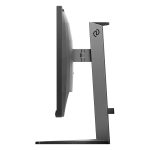
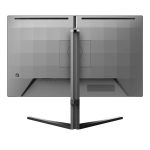
When you want more speed, a simple toggle switches the monitor to its FHD 320Hz mode. This is aimed at competitive players in titles like Valorant or Counter-Strike, where maximising frame rates and minimising input lag is more important. The monitor also caters to the console crowd, with HDMI 2.1 ports providing full support for 4K gaming at 120Hz on the PlayStation 5 and Xbox Series X.
Philips is also loading the Evnia with a suite of its gaming-focused software. These are managed through the new Evnia Precision Centre, providing a central hub for customisation. Features include SmartImage game modes for different genres, Stark ShadowBoost for illuminating dark areas, and Smart Crosshair, which alters the reticle's colour for better visibility. There's even a Smart Sniper feature that provides a zoom function for long-distance engagements.
Beyond the gaming features, the monitor includes a number of practical additions. It has an ergonomic stand with tilt, swivel, and height adjustment, built-in stereo speakers, and MultiView technology for displaying two sources simultaneously. In a nod to sustainability, Philips states the monitor's chassis is constructed from 85% post-consumer recycled plastic. The Philips Evnia 27M2N3800A is set to hit the market this month at £279.
Discuss on our Facebook page, HERE.
KitGuru says: If you were looking for a 4K IPS gaming monitor, would you consider something like the Evnia 27M2N3800A?
The post Philips Evnia 27M2N3800A gaming monitor boasts 160Hz and 320Hz modes first appeared on KitGuru.Our review of the Corsair Frame 5000D showed it to be a good case that offered a number of interesting features, however it also left a few unanswered questions. Top of the list was whether we mucked up our installation of the 420mm AIO cooler but we also had to address the big question; exactly how much RGB lighting can the Frame 5000D accommodate?
Time stamps
00:00 Start
01:22 Fixing some things
01:48 Looking at the airflow (50% 800rpm)
02:32 75% 1200rpm
03:11 100% 1700rpm
03:41 75% (removed filters)
04:12 Adding floor fans
04:41 Some more changes and additions
05:54 Leo’s thoughts
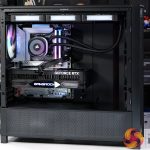
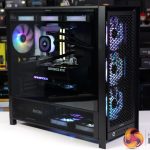
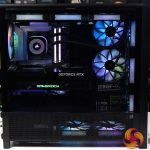
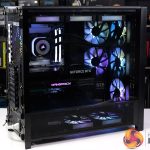
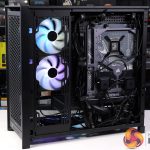

When we recently reviewed the Corsair Frame 5000D HERE we had our reservations about the installation of the cooling system, and we also wanted to dig deeper to visualise the airflow inside this case and its support for up to 12x 140mm fans. This gave us good reason to take a second look at the Frame 5000D, which started at the very moment we posted our review.
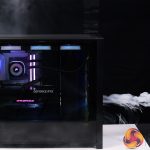
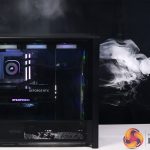

As you will see in our video, once we had installed the Corsair 420mm AIO cooler the correct way round we then tried some different fan configurations. We started with the stock configuration of four 140mm case fans with three 140mm fans on the AIO cooler. After that we removed the filters in the front and side, partly to remove obstructions, but mainly to improve the lightshow in our video. After that we installed two Corsair RX140 RGB fans in the floor of the case. Our final step was to replace the stock RS140 fans in the front of the case with RX140 RGB fans, open up the side ventilation in the case and then install two more RX140 RGB fans in that location.
KitGuru says: Enjoy our smoke-filled video and please leave a comment on YouTube if you spot anything interesting.
The post Corsair Frame 5000D Revisit… with Smoke! first appeared on KitGuru.